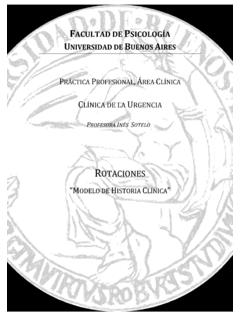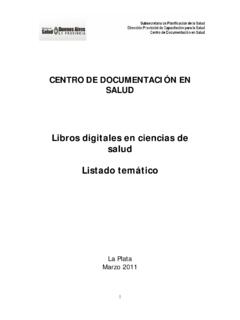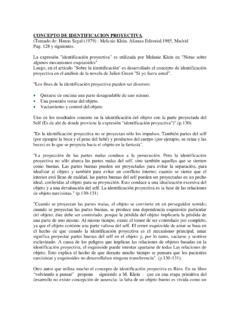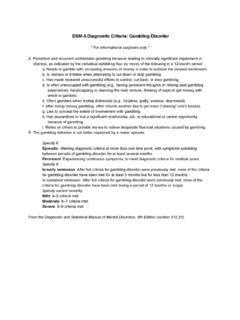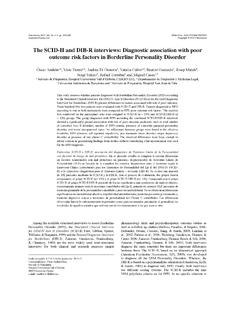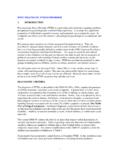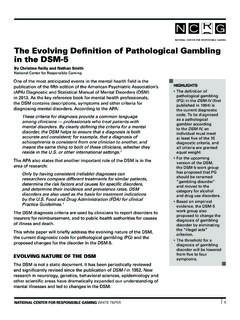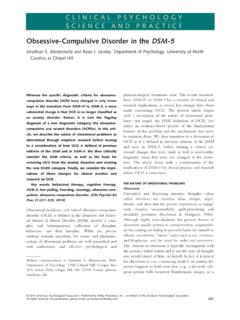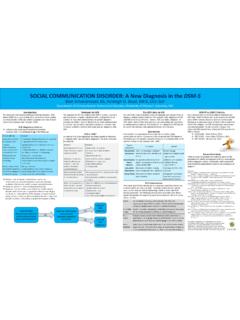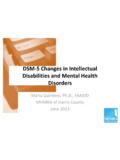Transcription of DSM-IV and DSM-5 Criteria for the Personality …
1 2012 American Psychiatric Association. All Rights Reserved. See Terms & Conditions of Use for more information. DSM-IV and DSM-5 Criteria for the Personality Disorders General Criteria for a Personality Disorder General Criteria for a Personality Disorder DSM-IV DSM-5 Criteria - Revised June 2011 A. An enduring pattern of inner experience and behavior the deviates markedly from the expectations of the individual's culture. This pattern is manifested in two (or more) of the following areas: 1. Cognition ( , ways of perceiving and interpreting self, other people and events) 2. Affectivity ( , the range, intensity, liability, and appropriateness of emotional response) 3. Interpersonal functioning 4.
2 Impulse control B. The enduring pattern is inflexible and pervasive across a broad range of personal and social situations. C. The enduring pattern leads to clinically significant distress or impairment in social, occupational, or other important areas of functioning. D. The pattern is stable and of long duration, and its onset can be traced back at least to adolescence or early adulthood. E. The enduring pattern is not better accounted for as a manifestation or consequence of another mental disorder. F. The enduring pattern is not due to the direct physiological effects of a substance ( , a drug abuse, a medication) or a general medical condition ( , head trauma). The essential features of a Personality disorder are impairments in Personality (self and interpersonal) functioning and the presence of pathological Personality traits.
3 To diagnose a Personality disorder, the following Criteria must be met: A. Significant impairments in self (identity or self-direction) and interpersonal (empathy or intimacy) functioning. B. One or more pathological Personality trait domains or trait facets. C. The impairments in Personality functioning and the individual s Personality trait expression are relatively stable across time and consistent across situations. D. The impairments in Personality functioning and the individual s Personality trait expression are not better understood as normative for the individual s developmental stage or socio-cultural environment. E. The impairments in Personality functioning and the individual s Personality trait expression are not solely due to the direct physiological effects of a substance ( , a drug of abuse, medication) or a general medical condition ( , severe head trauma).
4 2012 American Psychiatric Association. All Rights Reserved. See Terms & Conditions of Use for more information. DSM-IV and DSM-5 Criteria for the Personality Disorders Antisocial Personality Disorder Antisocial Personality Disorder DSM-IV Criteria DSM-5 Criteria - Revised April 2012 A. There is a pervasive pattern of disregard for and violation of the rights of others occurring since age 15 years, as indicated by three (or more) of the following: having hurt, mistreated, or stolen from another. 1. Failure to conform to social norms with respect to lawful behaviors as indicated by repeatedly performing acts that are grounds for arrest. 2. Deceitfulness, as indicated by repeated lying, use of aliases, or conning others for personal profit or pleasure.
5 3. Impulsivity or failure to plan ahead. 4. Irritability and aggressiveness, as indicated by repeated physical fights or assaults. 5. Reckless disregard for safety of self or others. 6. Consistent irresponsibility, as indicated by repeated failure to sustain consistent work behavior or honor financial obligations. 7. Lack of remorse, as indicated by being indifferent to or rationalizing. The essential features of a Personality disorder are impairments in Personality (self and interpersonal) functioning and the presence of pathological Personality traits. To diagnose antisocial Personality disorder, the following Criteria must be met: A. Significant impairments in Personality functioning manifest by: 1.
6 Impairments in self functioning (a or b): a. Identity: Ego-centrism; self-esteem derived from personal gain, power, or pleasure. b. Self-direction: Goal-setting based on personal gratification; absence of prosocial internal standards associated with failure to conform to lawful or culturally normative ethical behavior. AND 2. Impairments in interpersonal functioning (a or b): a. Empathy: Lack of concern for feelings, needs, or suffering of others; lack of remorse after hurting or mistreating another. b. Intimacy: Incapacity for mutually intimate relationships, as exploitation is a primary means of relating to others, including by deceit and coercion; use of dominance or intimidation to control others.
7 2012 American Psychiatric Association. All Rights Reserved. See Terms & Conditions of Use for more information. DSM-IV and DSM-5 Criteria for the Personality Disorders B. The individual is at least age 18 years. C. There is evidence of Conduct Disorder with onset before age 15 years. D. The occurrence of antisocial behavior is not exclusively during the course of Schizophrenia or a Manic Episode. B. Pathological Personality traits in the following domains: 1. Antagonism, characterized by: a. Manipulativeness: Frequent use of subterfuge to influence or control others; use of seduction, charm, glibness, or ingratiation to achieve one s ends. b. Deceitfulness: Dishonesty and fraudulence; misrepresentation of self; embellishment or fabrication when relating events.
8 C. Callousness: Lack of concern for feelings or problems of others; lack of guilt or remorse about the negative or harmful effects of one s actions on others; aggression; sadism. d. Hostility: Persistent or frequent angry feelings; anger or irritability in response to minor slights and insults; mean, nasty, or vengeful behavior. 2. Disinhibition, characterized by: a. Irresponsibility: Disregard for and failure to honor financial and other obligations or commitments; lack of respect for and lack of follow through on agreements and promises. b. Impulsivity: Acting on the spur of the moment in response to immediate stimuli; acting on a momentary basis without a plan or consideration of outcomes; difficulty establishing and following plans.
9 C. Risk taking: Engagement in dangerous, risky, and potentially self-damaging activities, unnecessarily and without regard for consequences; boredom proneness and thoughtless initiation of activities to 2012 American Psychiatric Association. All Rights Reserved. See Terms & Conditions of Use for more information. DSM-IV and DSM-5 Criteria for the Personality Disorders counter boredom; lack of concern for one s limitations and denial of the reality of personal danger C. The impairments in Personality functioning and the individual s Personality trait expression are relatively stable across time and consistent across situations. D. The impairments in Personality functioning and the individual s Personality trait expression are not better understood as normative for the individual s developmental stage or socio-cultural environment.
10 E. The impairments in Personality functioning and the individual s Personality trait expression are not solely due to the direct physiological effects of a substance ( , a drug of abuse, medication) or a general medical condition ( , severe head trauma). F. The individual is at least age 18 years. Avoidant Personality Disorder Avoidant Personality Disorder DSM-IV Criteria DSM-5 Criteria - Revised June 2011 A. A pervasive pattern of social inhibition, feelings of inadequacy, and hypersensitivity to negative evaluation, beginning by early adulthood and present in a variety of contexts, as indicated by four (or more) of the following: The essential features of a Personality disorder are impairments in Personality (self and interpersonal) functioning and the presence of pathological Personality traits.
